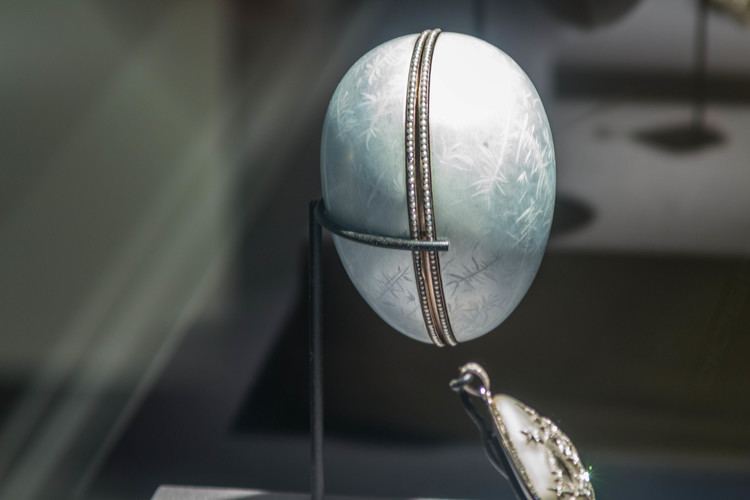 | ||
Similar Red Cross with Triptych, Duchess of Marlborough Egg, Red Cross with Imperial, Alexander III Equestrian, Cherub with Chariot E | ||
The Nobel Ice Egg, (/noʊˈbɛl/) sometimes also referred to as the Snowflake egg, is a jewelled Fabergé egg made under the supervision of the Russian jeweller Peter Carl Fabergé for the Swedish-Russian oil baron and industrialist Emanuel Nobel between 1913 and 1914. Unlike many of the eggs made in Fabergé's workshop, this egg is not considered an "imperial" egg and it was not given by a Russian Tsar to any Tsarina.
History
Franz Birbaum, Fabergé's head workmaster, recalls that Emanuel Nobel "was so generous in his presents that at times it seemed that this was his chief occupation and delight. Orders were constantly being made for him in the workshops and from time to time he came to have a look at them. Often he only decided for whom the present should be when the work was finished."
After the Russian Revolution, it was sold to the Parisian dealer A. A. Anatra, who subsequently sold it to Jacques Zolotnitzky, of A La Vieille Russie, in Paris. It was later sold to a North-American collector.
In 1994 it was sold at Christie's, in Geneva, for $220,000.
The Nobel Ice egg's current owner are Artie and Dorothy McFerrin of Houston. It is displayed at the Houston Museum of Natural Science.
